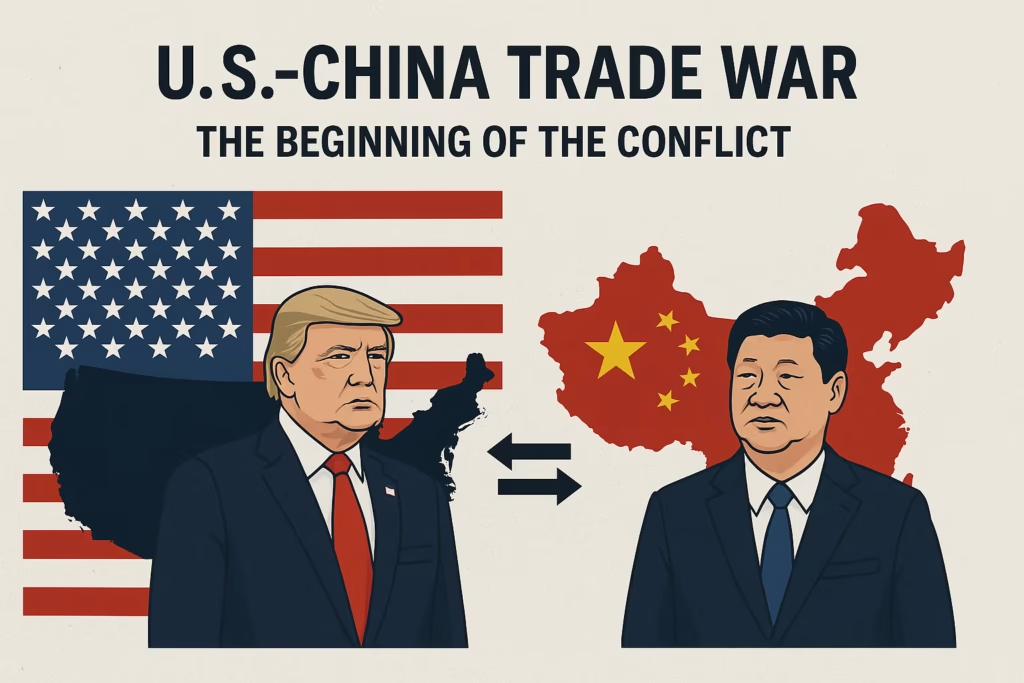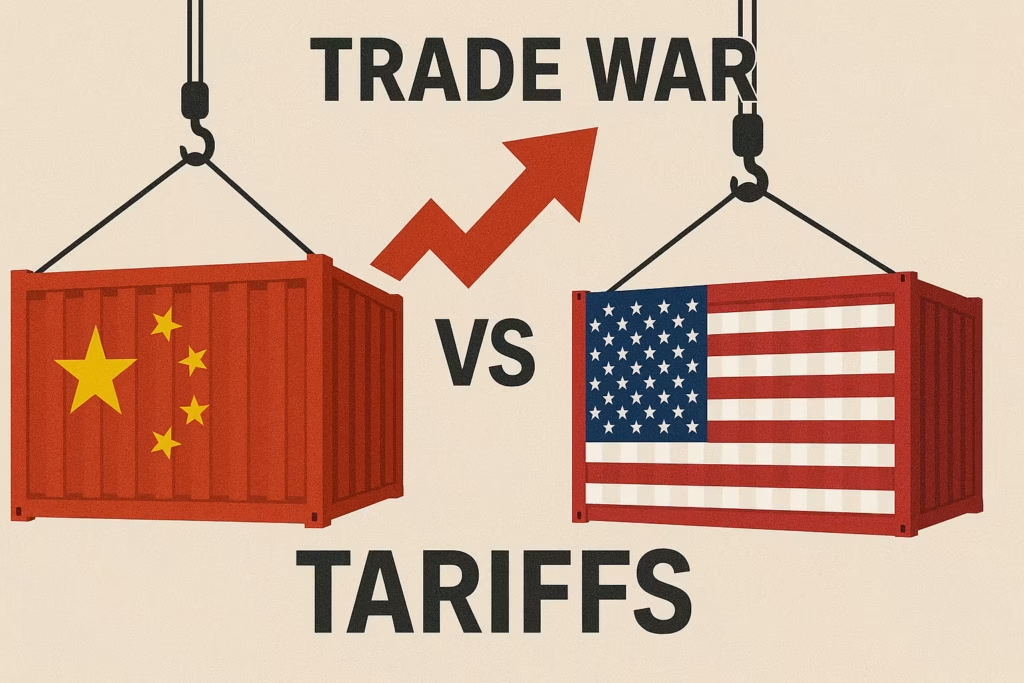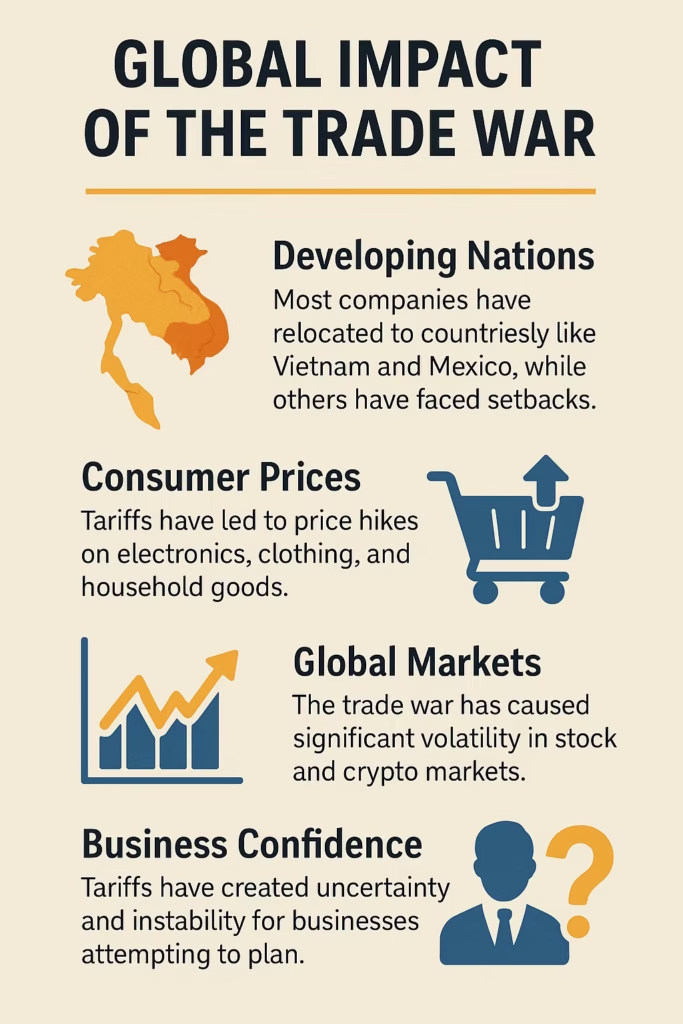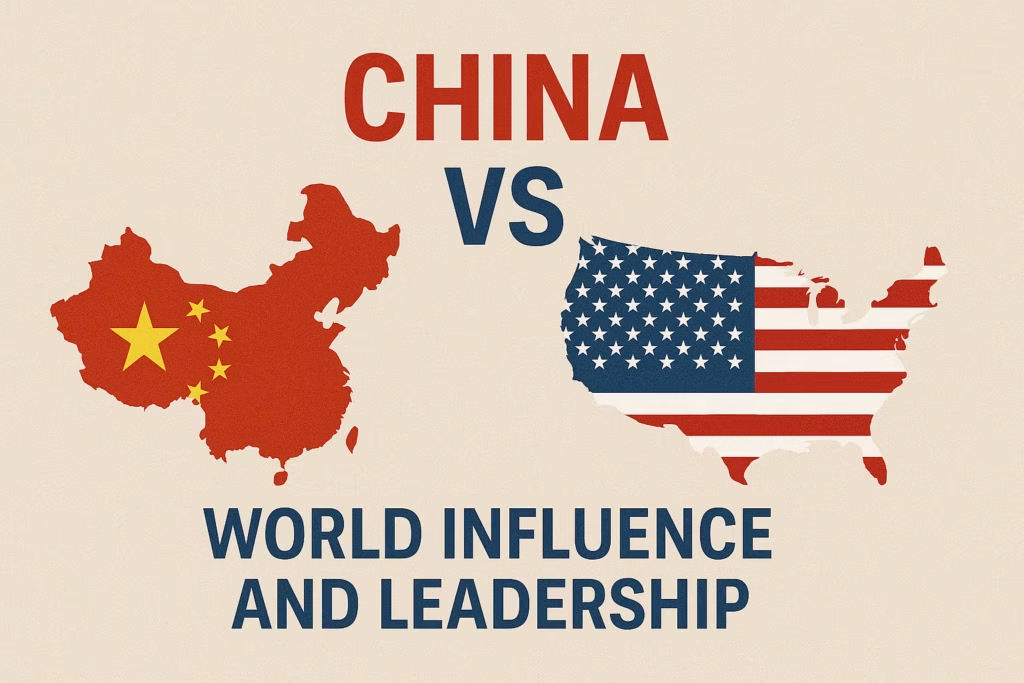Introduction
A slight disagreement between China and the US—it’s not what it actually looks like. It’s more of a strategic, long-term battle that is affecting the global economy. Initially, it was a simple dispute over tariffs, and now it has grown into a complex struggle over technology, supply chains, political influence, and economic leadership. The impacts of this trade war are already being felt worldwide.
The Beginning of the Conflict

It all started back in 2018 during the presidency of Donald Trump. The U.S. government accused China that they are not using fair trade practices, they are involved in intellectual property theft, and currency manipulation to maintain a trade advantage. In response, the U.S. imposed heavy tariffs on Chinese imports worth hundreds of billions of dollars.
China retaliated by setting its own tariffs, targeting American products such as soybeans, cars, and electronics. This back-and-forth escalation led to a full-scale trade war, with both nations striving to outmaneuver each other while limiting economic harm.
Key Issues in the Trade War

1. Tariffs and Trade Barriers
Tax rates on imported goods have increased, disrupting demand due to the resulting rise in prices. This escalation is affecting both financial and market stability in both countries. As tariffs increase, the cost of goods goes up, making it harder for importers to maintain previous import levels. Likewise, exporters are experiencing a decline in demand.
2. The Tech War
It is not limited to just goods and services but also to the field of technology. Citing national security concerns, the US government banned a number of Chinese tech companies, including ZTE and Huawei. Additionally, China’s access to vital chip-making machinery and artificial intelligence technology has been restricted by the US, which has also placed limitations on semiconductor exports.
In return, China has increased its efforts to become technologically self-reliant, investing heavily in domestic innovation and limiting its dependence on Western tech.
3. Intellectual Property Concerns
A major complaint from the US side is the alleged theft of American intellectual property. The United States says that Chinese companies, often supported by the government, are pressuring US-based companies to share confidential information and trade secrets in order to run businesses in China. Throughout trade talks, this problem has been at the forefront of US demands.
4. Supply Chain Disruption
Many US-based companies had to change their manufacturing schemes as a result of the trade war. A number of companies have moved their operations from China to Southeast Asia, specifically Vietnam, India, and Indonesia, in order to escape tariffs. The global economy is witnessing new advantages and disadvantages as a result of this change.
Global Impact of the Trade War

Although the conflict is between two nations, the effects have rippled across the world:
Developing Nations: Due to this trade war, most companies have decided to relocate, and countries like Vietnam and Mexico have benefited as manufacturing hubs, while others that depend on exports to the US or China have suffered setbacks.
Consumer Prices: An increase in tariffs means companies will now have to buy materials or goods at higher prices. As a result, the products they manufacture will also become more expensive for the average consumer compared to before. This has led to price hikes on electronics, clothing, and household goods.
Global Markets: This trade war has suddenly escalated, causing significant volatility in both the stock and crypto markets. Any new development—whether positive or negative—leads to immediate market reactions and sharp fluctuations.
Business Confidence: In the current situation, tariffs have increased so much that a sense of uncertainty and instability has taken over the business sector. Companies are confused about what decisions to make—if they buy goods now at higher prices and the tariff issue gets resolved later, they may face losses. On the other hand, if they hold off on purchasing and prices rise even further in the future, they will still suffer losses. In such unpredictable conditions, it’s becoming extremely difficult for businesses to plan a clear strategy.
Attempts at Resolution

In January 2020, both countries signed the “Phase One” trade deal, where China agreed to purchase an additional $200 billion in U.S. goods over two years, and the U.S. pledged to ease some tariffs.
However, the outbreak of the COVID-19 pandemic disrupted global trade and derailed the agreement, preventing both nations from meeting its targets.
Since then, numerous attempts have been made to de-escalate the trade war. Although relations showed signs of improvement during President Biden’s term, core issues such as technological dominance, human rights concerns, and strategic rivalry remain unresolved.
Current Status and Future Outlook

These days, the situation has evolved beyond just trade and profit. It’s no longer solely about economic advantage — now, it’s about global influence and power. Whichever country gains the upper hand in this competition is likely to be viewed as dominant on the world stage.
Both the U.S. and China are racing to lead in future technologies such as renewable energy, 5G, and artificial intelligence. This rivalry shows no signs of ending anytime soon. In fact, it appears to be transforming into a long-term cold economic war, as both nations are striving to outpace each other in nearly every field to secure their global standing and influence.
Why It Matters to You
The China-US trade war has an impact on your day-to-day life even if you are not an investor or a policymaker. The effects of this economic difficulty are seen everywhere, from the cost of your smartphone to the accessibility of products on the internet.
Being informed is more essential than ever as this silent war rages on because everyone is affected when the two biggest economies in the world conflict.
Conclusion
The China-US trade war is more than just a debate over tariffs. It’s a conflict of economic philosophies, global ambitions, and strategic priorities. Even if this issue gradually loses intensity on the surface, its underlying effects will continue to silently impact the global economy. For businesses, consumers, and countries around the world, the outcomes of this ongoing battle will define the future.

